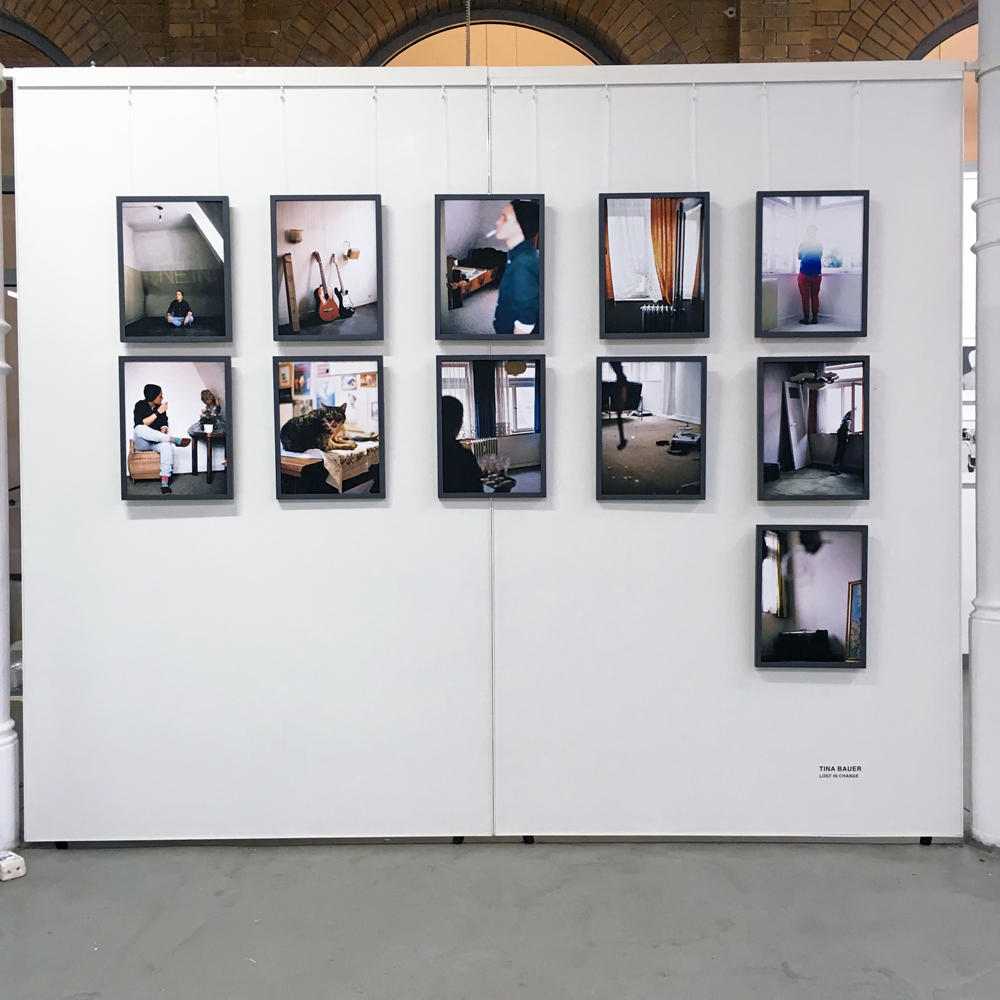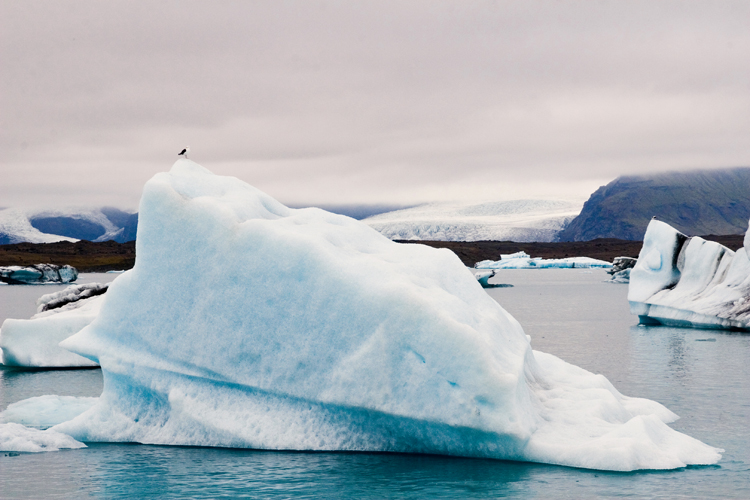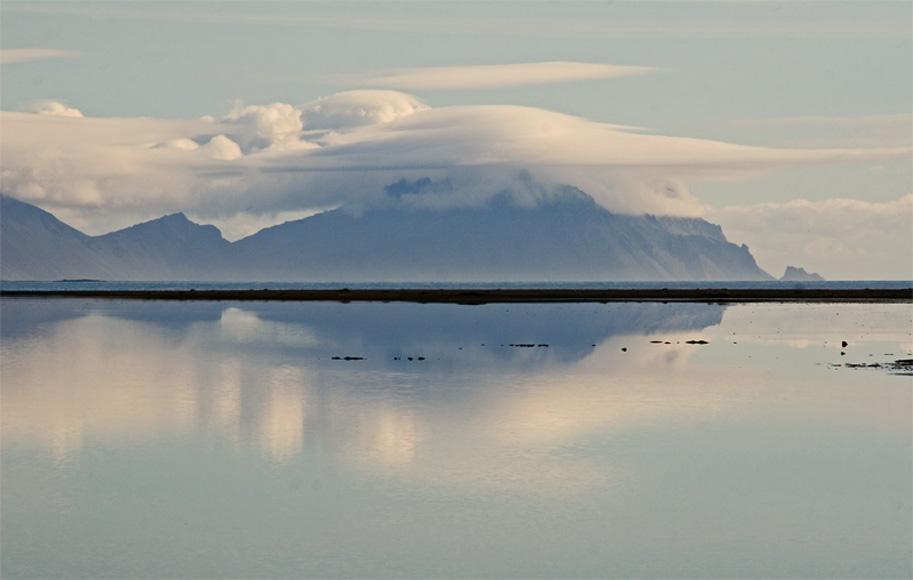„Gebärdenpoesie ist ebenso musikalisch, wie ein Lied, nur auf anderem Wege.“ Die 25-jährige Hamburgerin Anna-Lilja Häfele widmet sich mit ihren Filmproduktionsfirmen zwei ganz unterschiedlichen Schwerpunkten: Musik und Gebärdensprache – und realisiert Projekte dazu in Island. In der Webvideo-Serie „Deaf Reykjavík“ stellen isländische Gehörlose in Gebärdensprache deren Lieblingsorte in Reykjavík vor. In einer anderen Reportage mit Interview erzählt der isländische Troubadour Svavar Knútur von seiner Liebe zur Musik und das harte Brot ein Künstler zu sein. Ich habe Lilja interviewt über die Gemeinsamkeiten beider Filmschwerpunkte, ihre Liebe zu Island und geplante Projekte auf der Insel.Here go to English version
 tibauna: Dein Zitat „Gebärdenpoesie ist ebenso musikalisch, wie ein Lied, nur auf anderem Wege“ verrät, dass die Themen deiner Arbeit und deiner beiden Filmproduktionsfirmen Lilienfilm und No Rational Product mehr Gemeinsamkeiten haben, als es auf den ersten Blick erscheint. Kannst du das genauer erklären?
tibauna: Dein Zitat „Gebärdenpoesie ist ebenso musikalisch, wie ein Lied, nur auf anderem Wege“ verrät, dass die Themen deiner Arbeit und deiner beiden Filmproduktionsfirmen Lilienfilm und No Rational Product mehr Gemeinsamkeiten haben, als es auf den ersten Blick erscheint. Kannst du das genauer erklären?
Lilja:Beide Schwerpunkte verbindet vor allem die Themen Kommunikation, Menschlichkeit und der Ausdruck von Gefühlen. Meine Neugierde, Menschen kennen zu lernen – und damit meine ich wirklich kennen zu lernen – und Wege der Kommunikation zu beleuchten, steckt glaube ich in jedem meiner Projekte. Mir geht es um die Menschen selbst, ihre Geschichte. Ich schlage gerne Brücken, ob zwischen Ländern, Kulturen oder Kunstrichtungen. Gebärdensprache – und hier sei angemerkt, dass es nicht die eine Gebärdensprache gibt, sondern jedes Land seine eigene hat – ist eine ebenso vollwertige Sprache wie die Lautsprache.
Du selbst sprichst auch Gebärdensprache. Wieso und wie hast du das gelernt?
Ich spreche hauptsächlich DGS, Deutsche Gebärdensprache. Das ist quasi meine Muttergebärdensprache. Das erste Mal in Berührung kam ich schon während der Schulzeit. Die Eltern eines Freundes sind gehörlos. Wirklich angefangen DGS zu lernen habe ich 2008 während der Bachelorarbeitsphase, einfach aus Neugierde und Interesse. Ich habe meine Arbeit über gebärdensprachliches Kinderfernsehen, welches es zwar in Skandinavien, aber nicht in Deutschland gibt, geschrieben. Erst habe ich privat Unterricht genommen, fand dann aber in kürzester Zeit Anschluss an die Gehörlosenjugend in Deutschland. Das war der Punkt, an dem ich mit dem Unterricht aufgehört und nur noch von meinen Freunden gelernt habe. Das ist vergleichbar mit dem Erlernen einer Lautsprache: Einigen fällt es leichter, einigen schwerer, und am besten lernt man eine Fremdsprache, wenn man in dem fremden Land arbeitet und lebt. So habe ich es in Deutschland gemacht und so mache ich es in Island. Durch meine Island-Aufenthalte habe ich ein wenig isländische Gebärdensprache und etwas Isländisch gelernt. Durch andere Freunde spreche ich ein wenig ASL (American Sign Language).
Und wieso Island? Was verbindet dich mit dem Land?
Ich habe schon von klein auf eine sehr enge Verbindung zu Island. Alleine die Tatsache, dass die Eltern hier geheiratet und auch von der Schwangerschaft mit mir erfahren haben, ich dementsprechend einen isländischen Namen trage, verbindet mich mit Island.
Wie kamst du auf die Idee, etwas über Gebärdensprache in Island zu machen?
In Island leben momentan prozentual ebenso viele Gehörlose wie in Deutschland, und zwar 0,01 Prozent. Dass Island eine Insel ist, hat sicherlich Auswirkungen auf die Gemeinschaft der Gehörlosen. Es hat mich gereizt sowohl die hörende isländischen Kultur wie auch die Gehörlosenkultur kennen zu lernen. Statt nur Urlaub in Island zu machen, habe ich zwei Wochen lang bei Kolbrún Völkudóttir und ihrer Tochter gelebt. Kolbrún ist unter anderem Gebärdensprachlehrerin und Darstellerin der Gebärdensprachelfe Tinna von „Stundinn Okkar“ im isländischen Fernsehsender RÚV. Wir haben uns schnell angefreundet. Ich lernte viele ihrer Freunde kennen und wollte die Stadt entdecken – und so ist die Webvideo-Serie zu den Lieblingsorten Gehörloser in Reykjavík gestartet und ein etwas anderer Stadtführer entstanden. Inzwischen arbeite ich das Konzept aus: Ich möchte daraus ein großes Projekt machen und gerne andere Städte und andere Länder in dieser Form vorstellen.
Weitere Teile findet ihr auf youtube, Stichworte „Lilienfilm“ und „Deaf“
Gibt es viele Isländer, die isländische Gebärdensprache sprechen?
Leider habe ich dazu keine genaue Angabe. Ich weiß, dass es ungefähr 250 Gehörlose in Island gibt. Geht man davon aus, dass vielleicht 100 davon zwei bis drei Kinder haben und einige Verwandte ebenfalls Gebärdensprache sprechen, dann sind es vielleicht rund 1000 Isländer. Zudem wird isländische Gebärdensprache an einigen Schulen unterrichtet und an der Uni kann man sie studieren.
Der Gebärdensprache widmest du dich mit deiner Filmproduktionsfirma Lilienfilm. Mit der zweiten Produktionsfirma No Rational Product zusammen mit Henry Wulff realisiert ihr Film- bzw. Multimediaprojekte, die abseits des rationalen Mainstreams sind. Was genau habt ihr vor?
Ja, bis vor einem Monat liefen meine Eigenproduktionen nur über Lilienfilm. Damit werde ich auch in Zukunft weiter gebärdensprachliche szenische Produktionen angehen. Zum Jahreswechsel habe ich mich mit dem Produzenten Henry Wulff zusammen getan und bin bei seiner Berliner Firma No Rational Product eingestiegen. Momentan bereiten wir vor allem Produktionen im musikalischen, dokumentarischen Bereich und auf Island vor. Längerfristig ist das Ziel auf Island ein Kreativbüro zu eröffnen. Uns geht es grundsätzlich um Projekte und Themen, die eben nicht in das Schema F der deutschen Fernsehlandschaft passen, eine andere Herangehensweise an Inhalt und Visualität haben.
Was fasziniert dich an der isländischen Musikszene?
Sie ist so irrsinnig vielfältig! Und im Gegensatz zur deutschen Musikszene ist die isländische gefüllt mit viel mehr Herz, Enthusiasmus und Idealismus für die Musik selbst, finde ich. Soweit ich das bis jetzt erkennen kann, gibt es in Island viel mehr Wertschätzung und Austausch in der Szene. Mich beeindruckt das Netzwerk der Künstler – in das ich immer mehr hineinrutsche. Ich habe das Glück, Singer/Songwriter Svavar Knútur inzwischen als einen sehr lieben Freund bezeichnen zu dürfen und über ihn verschiedene Menschen kennen gelernt zu haben, wie zum Beispiel Myrra Rós. Außerdem habe ich in den vergangenen Monaten viel mit den Jungs von Árstíðir gearbeitet. Stetig treten neue Menschen in mein Leben, die dieses sehr bereichern.
Gibt es auch etwas, was deine Euphorie und Begeisterung etwas bremst?
Ich denke, es gibt immer ein paar Dinge, an die man sich erst gewöhnen muss. So haben mir die Isländer auch gezeigt, dass ich doch ein wenig deutscher bin als ich dachte – vor allem, was Verlässlichkeit und Pünktlichkeit angeht. Inzwischen bin ich auf die obligatorischen 40 Minuten Verspätung der Isländer schon recht gut eingestellt. Aber nach wie vor regt es mich etwas auf, wenn man einen Termin abmacht, selbst nach 40 Minuten niemand auftaucht und bei einem Telefonat dann der Spruch kommt: „Ach so, war das fest abgemacht? Ich dachte wir quatschen noch mal“. Meiner Begeisterung tut es aber keinen Abbruch.
Ja, das kenne ich! Aber vielleicht funktioniert die Kombination aus deutscher Pünktlichkeit und isländischer Gelassenheit besonders gut?! Welche Projekte in Island planst du in naher Zukunft?
Im August 2010 habe ich meine erste Dokumentation auf Island überhaupt begonnen. Erst sollte es nur ein kleiner Beitrag über die Reykjaviker Band Árstíðir werden. Inzwischen hat es sich „You should know of me“, so der Titel, zu einem Abend füllenden Dokumentationsfilm entwickelt. Die Arbeit mit der Band möchte ich auch längerfristig fortsetzen. Während meiner Rundtour auf Island im Sommer bin ich einigen außergewöhnlichen Menschen persönlich und filmisch begegnet, wie Hallbjörn Hjartasson (Anmerk.: 70 Jahre alter isländischer Country Sänger aus Skagaströnd) und Cathy Josephsson (Anmerk.: Sie hat das East Iceland Immigration Center in Vopnafjörður aufgebaut). Daraus wird in näherer Zukunft ein weiteres Projekt. Mit No Rational Product wollen wir in Island vorrangig dokumentarisch arbeiten. Die kulturelle Diversität Islands und die Kunstfestivals sind einmalig, das Netzwerk unter den Musikern wird in zukünftigen Projekten eine große Rolle spielen, aber auch die Geschichte Islands. Dabei wollen wir mehr Nutzen aus den neuen Möglichkeiten der Medien und unserem Netzwerk auf der Insel ziehen. Und natürlich ist die Mischung aus deutscher Genauigkeit und isländischer Entspanntheit eine unschlagbare Kombination.
(Fotos: Henry Wulff (Feature) / Frieder Häfele)
English version
Iceland with and without sound: Interview with filmmaker Anna-Lilja Häfele
„Sign language is as musical as a song, just in another way.“ The 25-year-old Anna-Lilja Häfele from Hamburg focuses on two different themes in her two film production companies: music and sign language – and implements projects to Iceland. In the webvideo series „Deaf Reykjavík“ Icelandic deaf present in sign language their favorite places in Reykjavík. In another report include interview the Icelandic troubadour Svavar Knutur talks about his love for music and the hard work to be an artist. I interviewed Lilja about the similarities of both film focuses, her love for Iceland and about planned projects on this island.
tibauna: Your statement „sign language is as musical as a song, just in another way“ reveals that the themes of your work and your two film production companies Lilienfilm and No Rational Product have more in common than appears at first sight . Can you explain this?
Lilja: Both emphases mainly link the issues of communication, humanity and the expression of feelings. My curiosity to get to know people – and I mean really get to know – and ways of communication are in each of my projects. I am talking about the people themselves, their history. I like to bridge the gap, between countries, cultures and art movements. Sign language – and it should be noted that there is not one sign language, but each country has its own – is a full-fledged form of communication as well as the spoken language.
You speak sign language too. Why and how did you learn this language?
I speak mainly DGS, German Sign Language. This is almost my mother sign language. I started in 2008, out of curiosity and interest. The parents of a friend are deaf. The language fascinated me early. Then I wrote my degree work about sign-language children’s television in Scandinavia. The fact that in Scandinavia are special programs for children in sign language, but not in Germany, I found this really interesting. But for this issue I had to know what sign language is. I have taken private lessons, soon I discovered the deaf youth in Germany. That was the point where I stopped with the lessons and just learned from my friends. This is similar to learning a spoken language: Some people find it easier, some harder, and the best way to learn a foreign language is to work in a foreign country and live there. So I have done in Germany and so I do it in Iceland. With other friends I speak a little ASL (American Sign Language).
And why Iceland? What connects you with this country?
Since I´m a little child I have a very close connection to Iceland. Just the fact that the parents married here and heared about the pregnancy with me, therefore I have an Icelandic name connects me with Iceland. And I travel here often.
How did you get the idea to make some videos about sign language in Iceland?
Currently in Iceland live in percentage terms as many deaf people as in Germany, 0.01 percent. Iceland is an island, this has an impact on the community of deaf people I think. It inspired me to learn both, the hearing Icelandic culture as well as the deaf culture. Instead of making holidays in Iceland I lived for two weeks with a deaf family. Furthermore, I met Kolbrún Völkudóttir (note: Web video „Deaf Reykjavík Part 1“) , actress in the sign language children’s show of „Stundinn Okkar“ on Icelandic television channel RÚV. I’ve won her as a friend, met many of her friends and wanted to learn and explore the city – and so the idea of web video series was born and started in Reykjavík. Meanwhile I’m working out the concept: I want to turn this into a big project and introduce you to other cities and other countries in this form.
Are there many Icelanders speak the Icelandic Sign Language?
I know that there are about 250 deaf people in Iceland. Assuming that perhaps 100 of them have two or three children and some relatives also speak sign language it may be around 1000 Icelanders who speaking sign language. In addition Icelandic Sign Language is taught in some schools and at university you can study them.
Your film production company Lilienfilm is for project with sign language. With the second production company No Rational Product with Henry Wulff you realize film and multimedia projects which are outside of the rational mainstream. What exactly do you plan?
Yes, until a month ago I produced my own film projects with Lilienfilm. With this company I will tackle sign language theatrical productions in the future. At the turn of the year I associated with producer Henry Wulff and got into his company No Rational Product in Berlin. Currently we prepare especially music productions and documentaries in Iceland. Longer term our goal in Iceland is to open a creative office. Our principle is making projects and topics that do not fit into the scheme F of the German TV landscape, but have a different approach to content and visuality.
Why the Icelandic music scene inspires you?
It is so incredibly diverse! And in contrast to the German music scene, the Icelandic one is filled with much more heart, enthusiasm and idealism for the music, I think. As far as I can estimate, in Iceland there is a lot more respect and exchange in the scene. I am impressed by the network of artists – in which I slide into more and more. I am lucky to describe Singer/Songwriter Svavar Knutur as a very dear friend of me. On him I have met several musicians, for example Myrra Rós. In recent months I have also worked hard with the guys from Árstíðir. Steadily more new contacts, friends and people come into my life and enrich very much.
Is there something that foils your euphoria and enthusiasm?
Of course! So the Icelanders shown me that I am a little more German than I thought – especially in terms of reliability and punctuality. Meanwhile, I’m set for the compulsory 40 minutes late of the Icelanders quite well. But still it is annoying me to arrange an appointment, even after 40 minutes nobody is coming. And if you call them the person says: „Oh, it was fixed appointment? I thought we chat before.“
Yes, I know! But maybe the combination of German punctuality and Icelandic serenity works particularly well? What projects are you planning in Iceland in the near future?
I want to continue a documentary about the band Árstíðir started in August 2010. First it should be only a short feature about the band. Meanwhile it has developed into a long documentary. „You should know of me,“ the title, is the first project I’ve ever implemented in Iceland. During the Iceland-summer trip I also met and filmed some extraordinary people, like Hall Björn Hjartasson (note: 70 year old Icelandic country singer from Skagaströnd) and Cathy Josephsson (note: she builded up the East Immigration Center in Vopnafjörður ) – but this will be another project. With No Rational Product we want to work primarily on Iceland documentaries. The cultural diversity of Iceland and the arts festivals are unique, the network among the musicians will play a major role in our future projects, but also the history of Iceland. We want to make more benefit out of the new possibilities of the media and our network on this island. And of course the mix of German accuracy and Icelandic calmness is a winning combination.
(Photos by Henry Wulff (Feature)/ Frieder Häfele)



Schreibe einen Kommentar